
The Big Bang is a physical theory that describes how the universe expanded from an initial state of high density and temperature. It was first proposed in 1931 by Roman Catholic priest and physicist Georges Lemaître when he suggested the universe emerged from a "primeval atom". Various cosmological models of the Big Bang explain the evolution of the observable universe from the earliest known periods through its subsequent large-scale form. These models offer a comprehensive explanation for a broad range of observed phenomena, including the abundance of light elements, the cosmic microwave background (CMB) radiation, and large-scale structure. The overall uniformity of the universe, known as the flatness problem, is explained through cosmic inflation: a sudden and very rapid expansion of space during the earliest moments. However, physics currently lacks a widely accepted theory of quantum gravity that can successfully model the earliest conditions of the Big Bang.
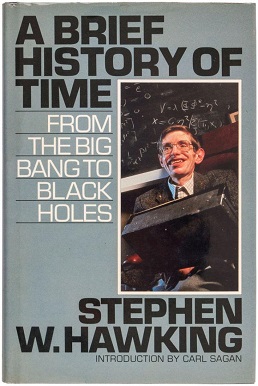
A Brief History of Time: From the Big Bang to Black Holes is a book on theoretical cosmology by English physicist Stephen Hawking. It was first published in 1988. Hawking wrote the book for readers who had no prior knowledge of physics.
Micro black holes, also called mini black holes or quantum mechanical black holes, are hypothetical tiny black holes, for which quantum mechanical effects play an important role. The concept that black holes may exist that are smaller than stellar mass was introduced in 1971 by Stephen Hawking.
"They Saved Lisa's Brain" is the twenty-second and penultimate episode of the tenth season of the American animated television series The Simpsons. It first aired on the Fox network in the United States on May 9, 1999. In the episode, after writing a thoughtful letter to the Springfield Shopper, Lisa is invited to join the Springfield chapter of Mensa. When Mayor Quimby later flees Springfield, the group takes control of the town, hoping to improve the lives of Springfieldians through the rule of the smartest. Meanwhile, Homer poses for a series of erotic photos.

Dennis William Siahou Sciama, was an English physicist who, through his own work and that of his students, played a major role in developing British physics after the Second World War. He was the PhD supervisor to many famous physicists and astrophysicists, including John D. Barrow, David Deutsch, George F. R. Ellis, Stephen Hawking, Adrian Melott and Martin Rees, among others; he is considered one of the fathers of modern cosmology.
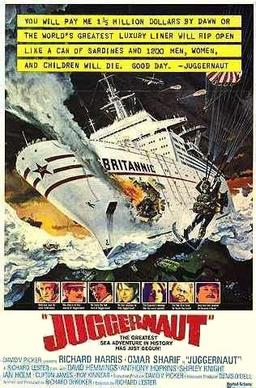
Juggernaut is a 1974 British crime suspense film starring Richard Harris, Omar Sharif, and Anthony Hopkins. The film, which was directed by Richard Lester, was largely shot on location aboard the TS Hamburg in the North Sea. It was inspired by real events aboard QE2 in May 1972 when Royal Marines and Special Boat Service personnel parachuted onto the ship because of a bomb hoax.

Stephen Hawking (1942–2018), a theoretical physicist, has appeared in many works of popular culture.

Hawking is a 2004 biographical drama television film directed by Philip Martin and written by Peter Moffat. Starring Benedict Cumberbatch, it chronicles Stephen Hawking's early years as a PhD student at the University of Cambridge, following his search for the beginning of time, and his struggle against motor neuron disease. It premiered in the UK in April 2004.

The Faceless Hunters are a race of alien supervillains in the DC Comics universe that first appeared in Strange Adventures #124. They were created by Gardner Fox and Mike Sekowsky. The Faceless Hunters hail from Klaramar.

Futurama: The Beast with a Billion Backs is a 2008 American direct-to-video adult animated science-fiction comedy-adventure film based on the animated series Futurama, and the second of four straight-to-DVD films that make up the show's fifth season. The film was released in the United States and Canada on June 24, 2008, followed by a UK release on June 30, 2008 and an Australian release on August 6, 2008. The title refers to a euphemism for sexual intercourse—"the beast with two backs". Comedy Central aired the film as a "four-part epic" on October 19, 2008. The movie won an Annie Award for "Best Animated Home Entertainment Production".
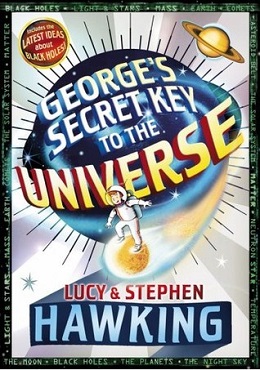
George's Secret Key to the Universe is a 2007 children's book written by Lucy and Stephen Hawking with Christophe Galfard. Upon its release, the book received mixed reviews, and was followed by five sequels, George's Cosmic Treasure Hunt in 2009, George and the Big Bang in 2011, George and the Unbreakable Code in 2014 and George and the Blue Moon in 2016 and George and the Ship of Time in 2018.
Lieutenant Colonel Stephen George Styles, GC, usually known as George Styles, was a British Army officer and a bomb disposal expert in the Royal Army Ordnance Corps (RAOC). He received the George Cross for his service in defusing terrorist bombs in Northern Ireland in the 1970s.

The safety of high energy particle collisions was a topic of widespread discussion and topical interest during the time when the Relativistic Heavy Ion Collider (RHIC) and later the Large Hadron Collider (LHC)—currently the world's largest and most powerful particle accelerator—were being constructed and commissioned. Concerns arose that such high energy experiments—designed to produce novel particles and forms of matter—had the potential to create harmful states of matter or even doomsday scenarios. Claims escalated as commissioning of the LHC drew closer, around 2008–2010. The claimed dangers included the production of stable micro black holes and the creation of hypothetical particles called strangelets, and these questions were explored in the media, on the Internet and at times through the courts.

Stephen William Hawking was an English theoretical physicist, cosmologist, and author who was director of research at the Centre for Theoretical Cosmology at the University of Cambridge. Between 1979 and 2009, he was the Lucasian Professor of Mathematics at Cambridge, widely viewed as one of the most prestigious academic posts in the world.
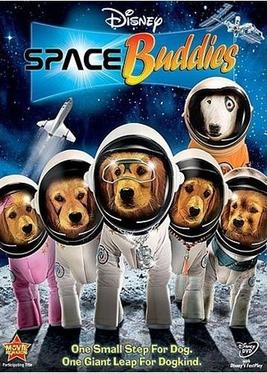
Space Buddies is a 2009 American science fiction comedy film. It is the third film in the Air Buddies franchise. It was released on February 3, 2009. Like Air Buddies and Snow Buddies, it was released directly on DVD and became the first one to be released on Blu-ray.
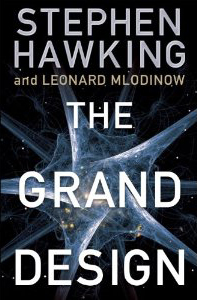
The Grand Design is a popular-science book written by physicists Stephen Hawking and Leonard Mlodinow and published by Bantam Books in 2010. The book examines the history of scientific knowledge about the universe and explains eleven-dimensional M-theory. The authors of the book point out that a Unified Field Theory may not exist.
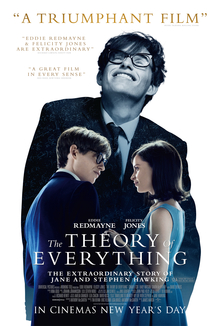
The Theory of Everything is a 2014 biographical romantic drama film directed by James Marsh. Set at the University of Cambridge, it details the life of the theoretical physicist Stephen Hawking. It was adapted by Anthony McCarten from the 2007 memoir Travelling to Infinity: My Life with Stephen by Jane Hawking, which deals with her relationship with her ex-husband Stephen Hawking, his diagnosis of amyotrophic lateral sclerosis (ALS), and his success in the field of physics. The film stars Eddie Redmayne and Felicity Jones, with Charlie Cox, Emily Watson, Simon McBurney, Christian McKay, Harry Lloyd, and David Thewlis featured in supporting roles. The film had its world premiere at the 2014 Toronto International Film Festival on 7 November 2014. It had its UK premiere on 1 January 2015.
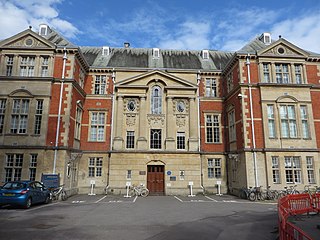
The Department of Physics at the University of Oxford is located on Parks Road in Oxford, England. The department consists of multiple buildings and sub-departments including the Clarendon Laboratory, Denys Wilkinson's building, Dobson Square and the Beecroft building. Each of these facilities contribute in studying different sub-types of physics such as Atomic and Laser Physics, Astrophysics, Theoretical Physics, etc. The physics division have made scientific contributions towards this branch of science since the establishment of the department.

Brief Answers to the Big Questions is a popular science book written by physicist Stephen Hawking, and published by Hodder & Stoughton (hardcover) and Bantam Books (paperback) on 16 October 2018. The book examines some of the universe's greatest mysteries, and promotes the view that science is very important in helping to solve problems on planet Earth. The publisher describes the book as "a selection of [Hawking's] most profound, accessible, and timely reflections from his personal archive", and is based on, according to a book reviewer, "half a million or so words" from his essays, lectures and keynote speeches.
















